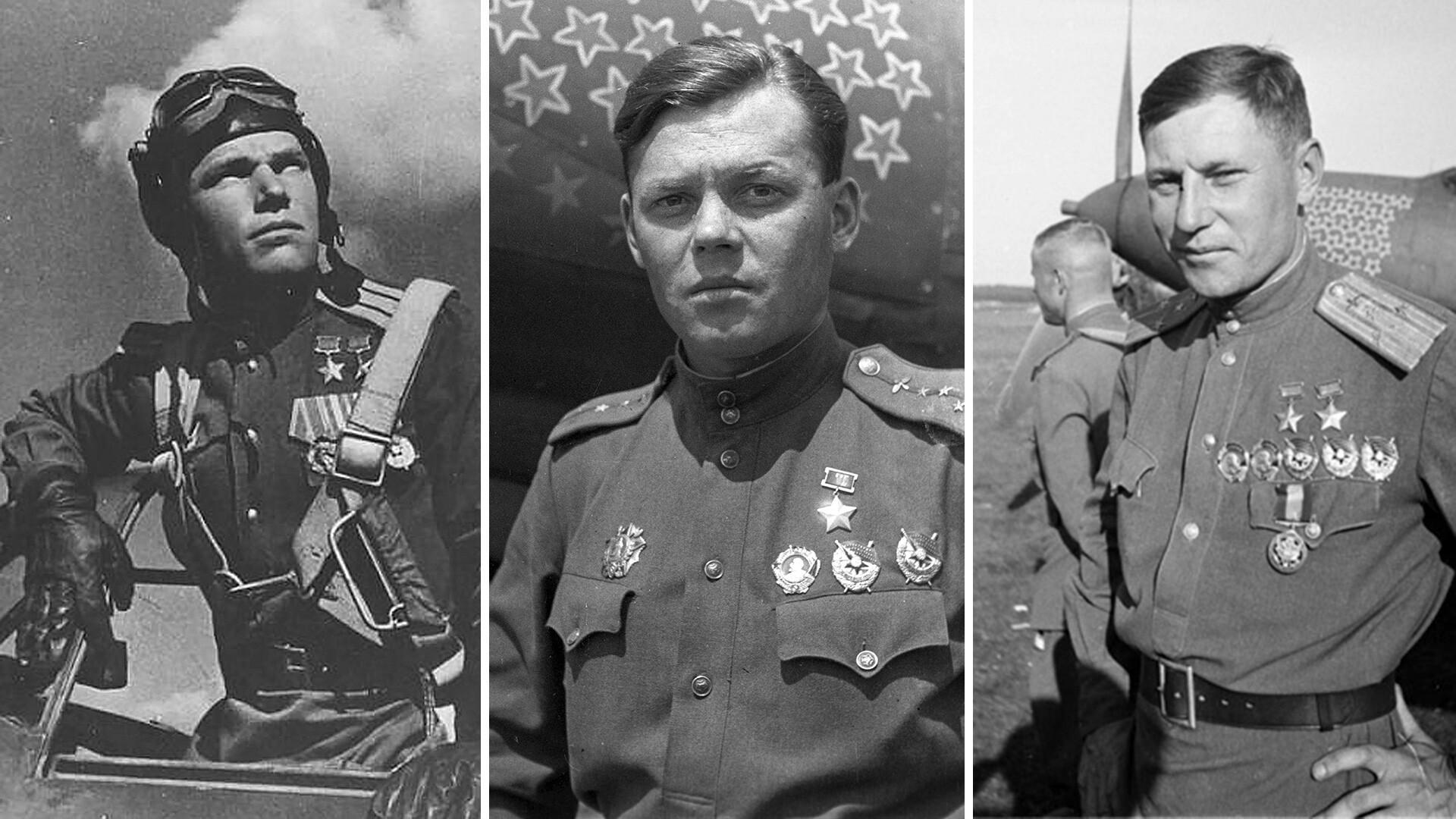

Hero of the Soviet Union Alexander Pokryshkin.
Arkady Shaikhet/russiainphoto.ru"Attention! Attention! Pokryshkin's in the air!" was how German warning posts used to alert Luftwaffe airmen to the appearance on the horizon of the P-39 Airacobra fighter with the tactical number "100" piloted by the famous Soviet ace Alexander Ivanovich Pokryshkin. Luftwaffe pilots were expected to exercise extra caution and withdraw from protracted dogfights, while the junior ones were supposed to return to their airdromes immediately.
In the course of the war, Pokryshkin flew over 650 sorties, took part in 156 aerial battles and downed 59 enemy aircraft individually, and six in group kills. According to another estimate, his tally of aerial victories exceeded 100.
Alexander Ivanovich was not only a talented pilot but also the inventor and champion of new tactical formations and aerial combat maneuvers such as the "scissors", "falcon punch", "pincers", "pendulum", and others. Thanks to him, the highly effective "Kuban stacks" combat formation, which gave fighter planes more room for maneuver when looking for targets, became widespread in the Red Army.
Pokryshkin, who was at the front line from the very beginning of the war, was one of the first pilots to be allowed to fly alone on a "free hunt" for German aircraft, including behind enemy lines, despite the enemy's total air supremacy. This practice only became widespread among Soviet pilots from 1943.
"Pokryshkin's fighting talent was best demonstrated in the battle for the Kuban region," recalled pilot Mikhail Vodopyanov. "Here, he fought in a kind of frenzy, impatiently looking for enemy aircraft in the sky. He would swoop from above on Messerschmitts, Junkers and Heinkels, attacking them at high speed and riddling them with short, accurate machine-gun bursts, making them plummet to the ground in a lump of burning metal. Our soldiers in the trenches on the front line marveled at his blistering and devastating attacks on so many occasions that they began to recognize Pokryshkin's "handwriting" in battle even when his aircraft was so high in the sky that the number "100", painted in white on the fuselage, could not be seen from the ground. His Sotka (short for "one hundred") was known by everyone on the front line. Fascist pilots were terrified of it."
Despite the fact that, from 1944 Alexander Ivanovich commanded aviation regiments and divisions, he continued to fly and down enemy aircraft until Victory Day. In the postwar period, Thrice Hero of the Soviet Union Pokryshkin rose to the position of Deputy Commander-in-Chief of the USSR Air Defense Troops. In 1972 he was promoted to the rank of Marshal of Aviation.
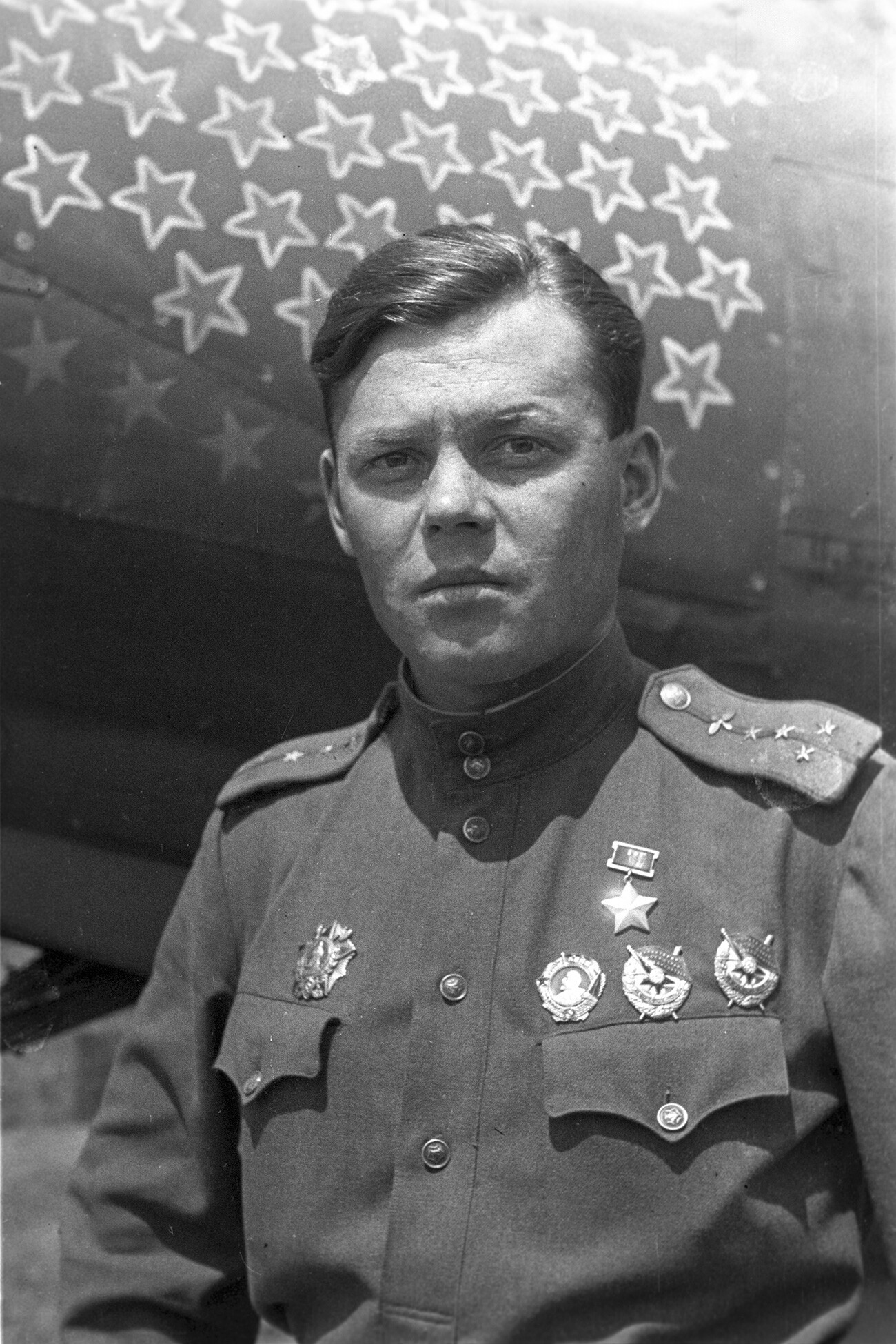
Hero of the Soviet Union Grigory Rechkalov.
SputnikGrigory Rechkalov, a fellow pilot of Alexander Pokryshkin's, flew 452 sorties during the war, took part in 122 aerial combats and notched up 56 individual shootdowns (according to other accounts - 61) and five group shootdowns of enemy aircraft. He sat at the controls of many fighter aircraft but the Airacobra became his favorite.
Rechkalov was a master of the "free hunt", which he usually conducted at high altitudes (up to 6,000 meters). For him, finding his prey was no problem since his eyesight was exceptionally sharp.
Grigory Andreyevich was regarded as a courageous, straightforward and candid individual, but at the same time he was endowed with a highly contradictory and mercurial temperament. In one situation he would carry out orders in a disciplined and punctilious manner, but in another he could easily get distracted from the main purpose of a mission and go in pursuit of a random enemy aircraft.
Rechkalov's finest hour came in the large-scale aerial battle for the Kuban region in the spring of 1943 in which he shot down 17 enemy planes. "There were no sorties which did not involve us engaging in combat," he recalled. "Initially, the Fascists were as bold as brass. A group would appear from nowhere and set upon us, and you'd see first one and then another of our planes on fire and plummeting to the ground. But we soon saw through the tactics of the Fascist pilots and started doing things differently: going out in pairs rather than larger flights, making better use of radio for communications and targeting and forming groups of aircraft into so-called "stacks"."
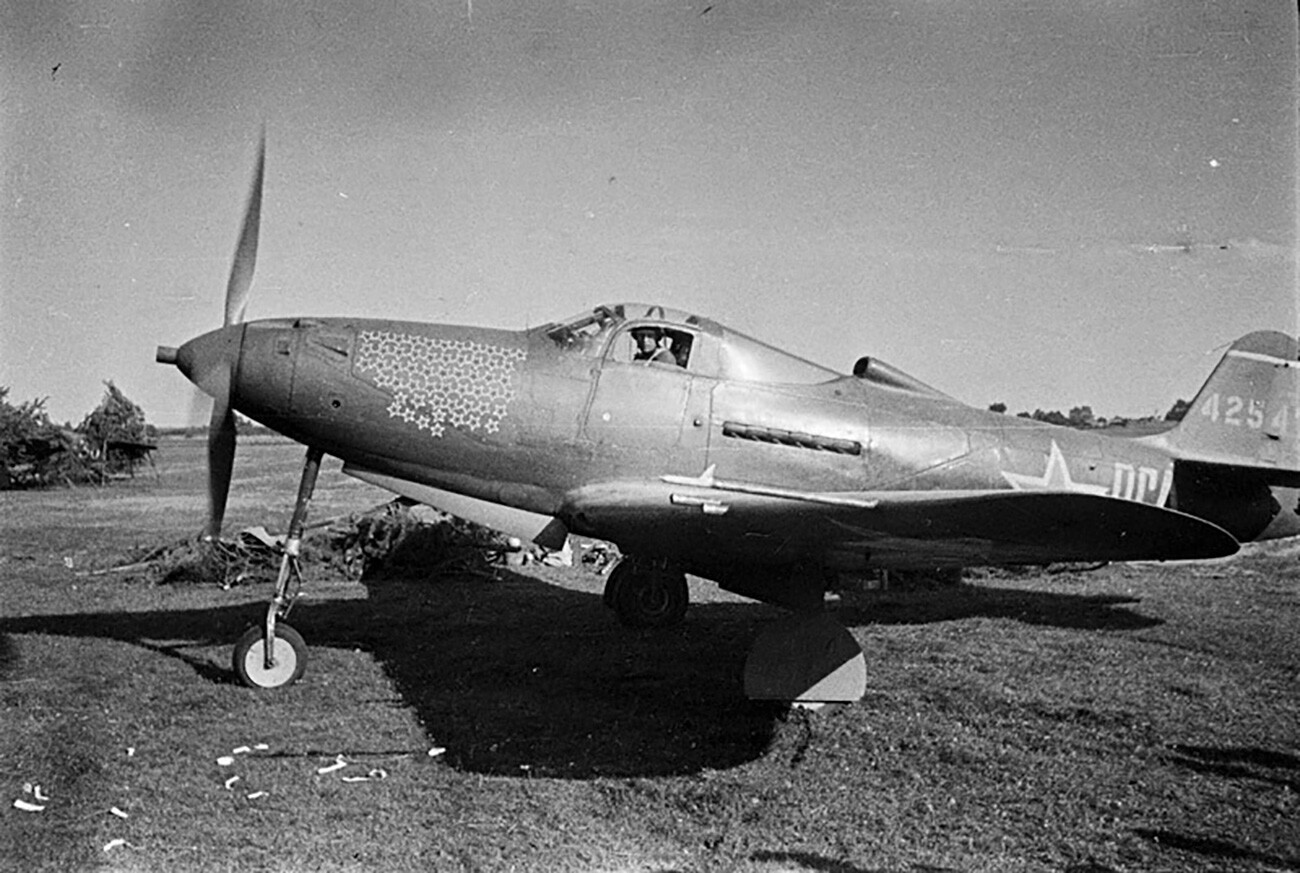
Rechkalov's P-39 Airacobra fighter.
Arkady Shaikhet/russiainphoto.ruHardly any other Soviet pilot could boast of having shot down such a variety of enemy planes as Grigory Andreyevich. His tally included Heinkel He 111 and Junkers Ju 88 and 87 bombers, Messerschmitt Bf 109 and Focke-Wulf Fw 190 fighter aircraft, various types of transport and reconnaissance planes, and even a Savoia hydroplane.
As war ended, Twice Hero of the Soviet Union Grigory Rechkalov held the post of flight examiner of the 6th Guards Fighter Corps. After 1945 he continued to serve in the air force and rose to the rank of major-general.
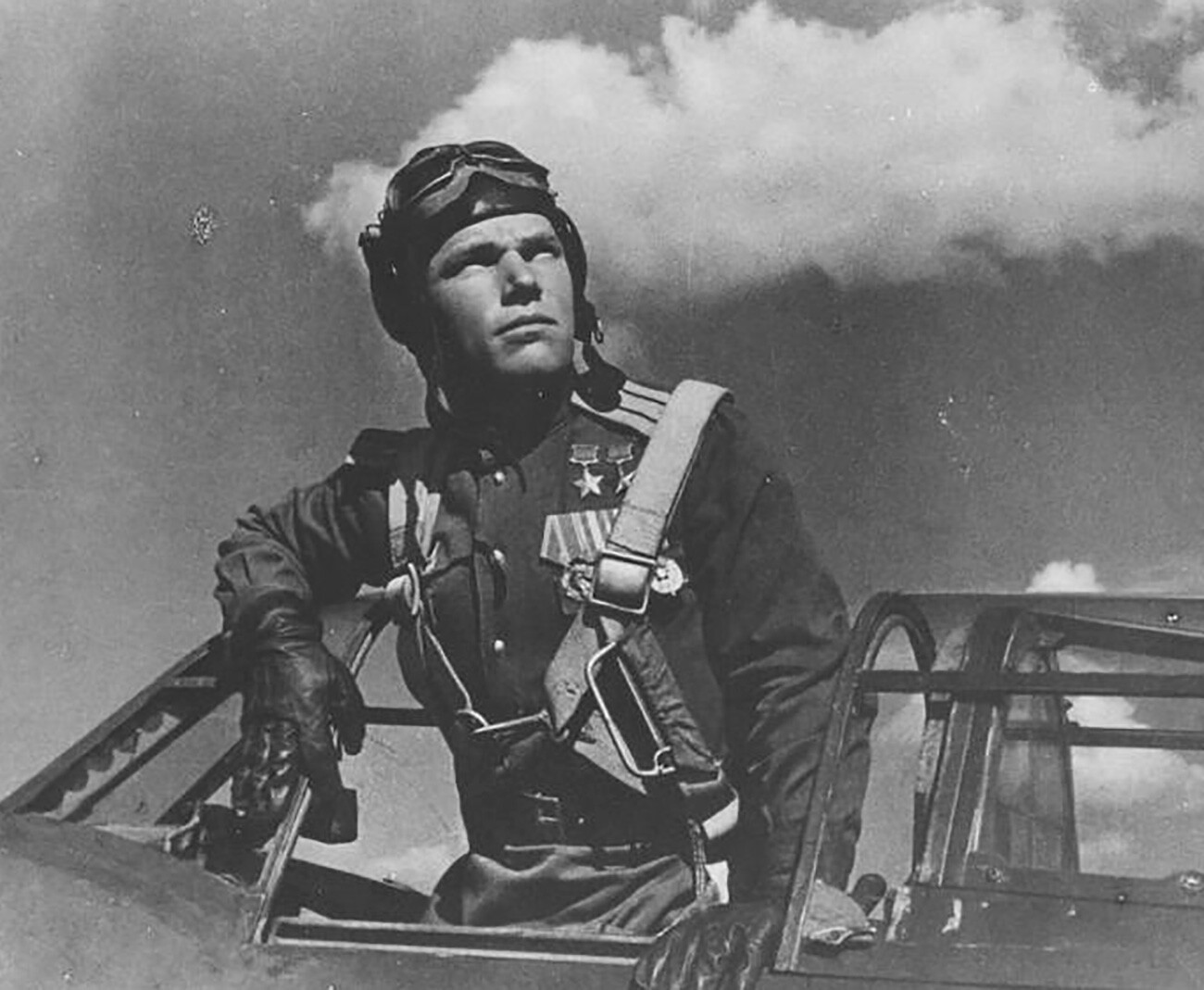
Hero of the Soviet Union Ivan Kozhedub.
Boris Velyashev/МАММ/МDF/russiainphoto.ru"Precise maneuvering, overwhelming rapidity of attack and striking at extremely short range," is how Ivan Nikitovich Kozhedub defined the essence of aerial combat. The celebrated flier notched up 62 (personal) shootdowns of enemy aircraft, making him the highest-scoring fighter pilot not just in the Red Army air force but also among all the countries of the anti-Hitler coalition.
Having only arrived at the front lines in the spring of 1943, Kozhedub flew fewer sorties and took part in a smaller number of dogfights than either Rechkalov or Pokryshkin (his tally was 330 and 120, respectively). Nevertheless, his initiative, daring, shrewdness, courage and intelligence made him the Soviet Union's number one ace.
Skilled in combat, Ivan Nikitovich always strove to aggressively attack the enemy first. At the same time, he was also capable of acting cautiously and coolly if the occasion demanded.
Here is Kozhedub's own account of a dogfight in the course of the Battle of Kursk: "Having got carried away in the heat of battle, I made the mistake of losing altitude… Correcting my blunder, I rapidly embarked on the process of climbing again. Two Messerschmitts tagged along behind me… I calmly continued my spiral ascent. The Germans followed at an excessively steep angle. I immediately realized that in gaining altitude in that way the Germans would invariably either fall behind or stall. I started to closely observe the nearest Messerschmitt. The German did indeed soon run out of momentum, lose speed and stall. I quickly put my Lavochkin into a hammerhead turn (an aerobatic maneuver allowing a rapid change of flight direction to be performed), flew straight at the German and set him ablaze with my first good burst."
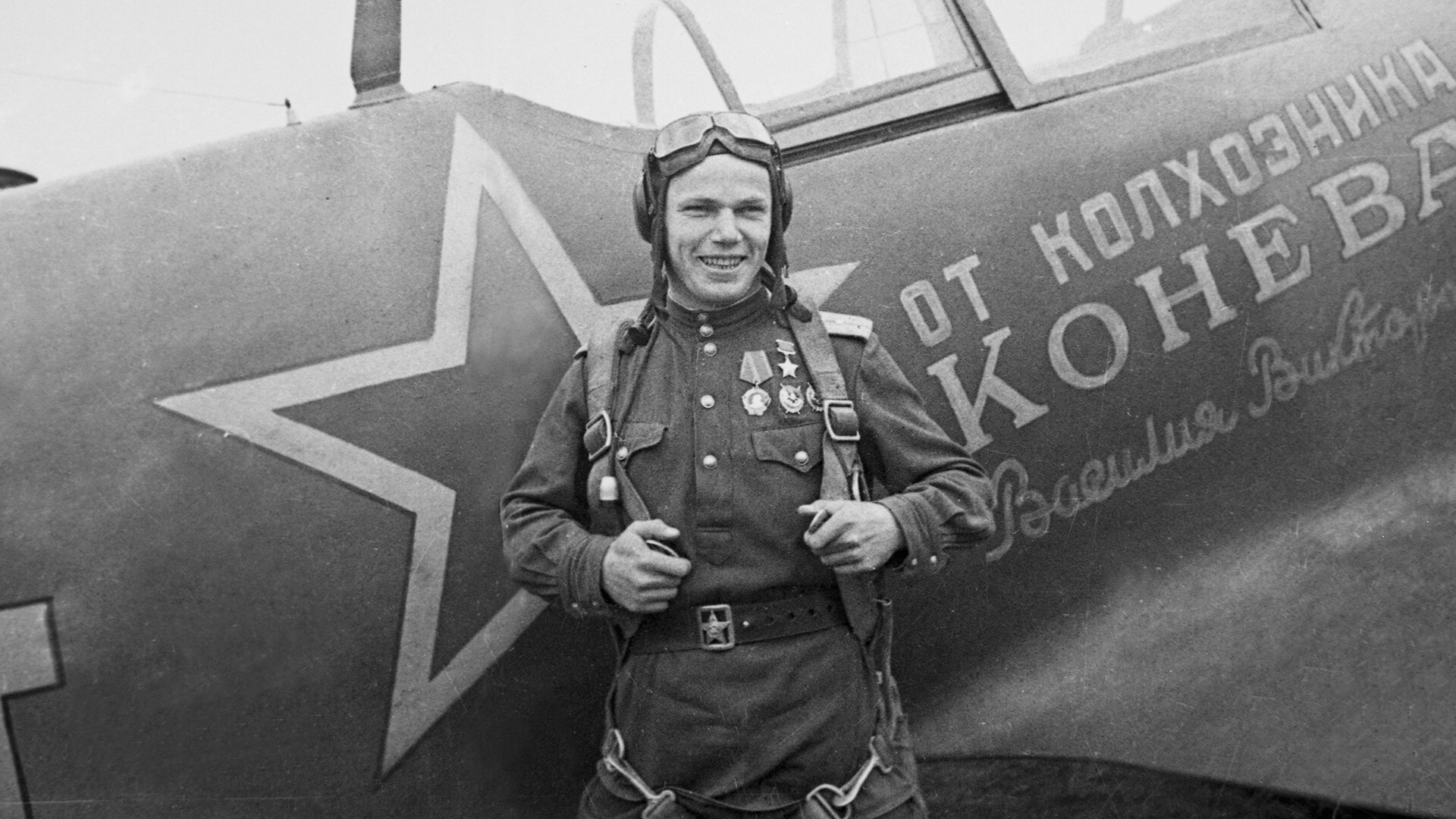
Ivan Kozhedub and his La-5FN fighter.
Ivan Shagin/SputnikIvan Nikitovich was one of the first allied pilots to manage to shoot down a German Messerschmitt Me 262 jet-powered fighter aircraft. Unfortunately, Kozhedub's tally also included (according to his own account) two American P-51 Mustang fighter aircraft which accidentally attacked the plane he was flying in April 1945. The Soviet ace only learnt that they were friendly planes when it was too late and the dogfight was over.
In the Korean War of 1950-1953 Thrice Hero of the Soviet Union Kozhedub commanded the 324th Fighter Aviation Division, which scored 216 aerial victories. Subsequently Ivan Nikitovich continued to serve in the air force in leadership roles. In 1985 he was promoted to the rank of Marshal of Aviation.
If using any of Russia Beyond's content, partly or in full, always provide an active hyperlink to the original material.
Subscribe
to our newsletter!
Get the week's best stories straight to your inbox